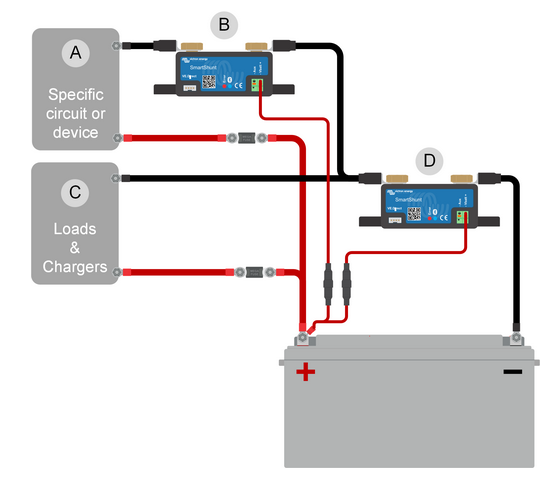On my Boat, I have a quattro and a cerbo. I am just on my way to remove the old (domestic) lead batteries and replace them with LiFePos.
The quattro's negative line is (obviously) connected to boat ground as is the starter battery and the engine.
In order to enable the LiFePos to limit charge current (i.e. in case of imbalance) I want to activate DVCC. The LiFePos are already "talking" to the cerbo, so everything is fine on that side.
BUT: Other posts say (and that is also my experience) that DVCC only works correctly when the current going into or coming out of the DC system (i.e. all DC consumers and chargers apart from the quattro) is being measured by a SmartShunt configured as a DC meter.
The SmartShunt, however, normally has to be inserted into the negative line, thus creating a second ground potential which is at most 50mV above or below system ground. (depending on charging or discharging the batteries via the DC system)
In order for this to work correctly (and safely) there must be no other interconnections between the negative DC line and the boats ground, which cannot be guaranteed, especially not on a used boat with complex electrical installations.
In the best case, such interconnections would only lead to wrong measurements. In the worst case, hundreds of amps of current would happyly flow through a thin wire causing lots of unhappiness to my insurance.
So how should I wire this?
Would it be an option to insert the SmartShunt into the positive line, feeding SmartShunts supply from the 24V system which is also present on my boat? How about the SmartShunts VE.direct port? Is that galvanically isolated?

